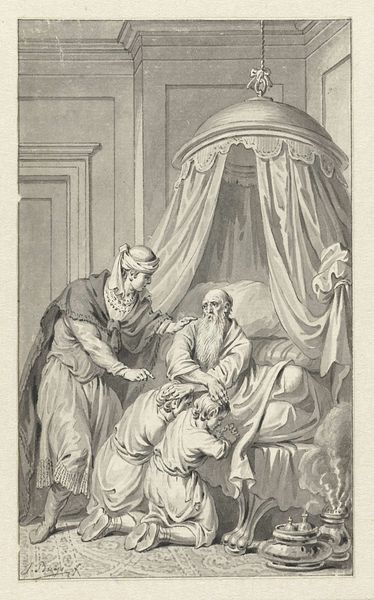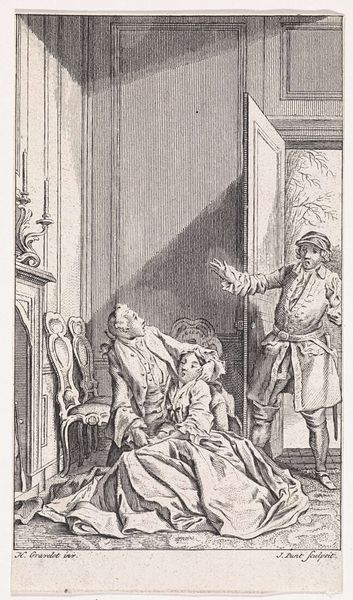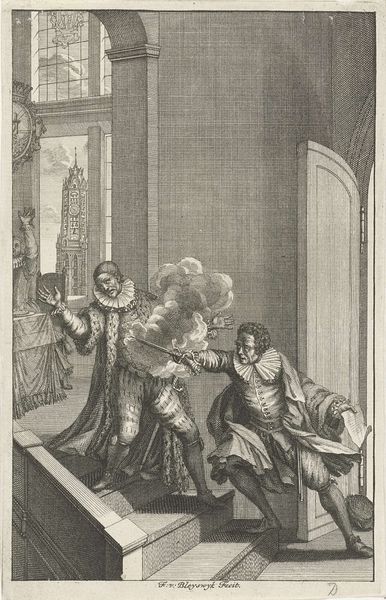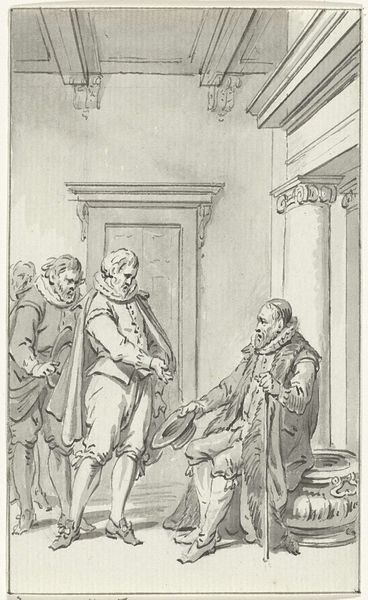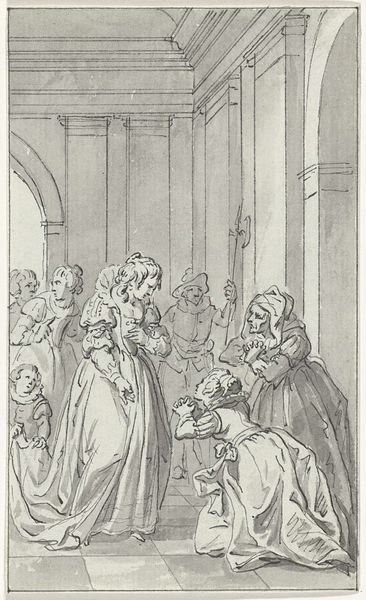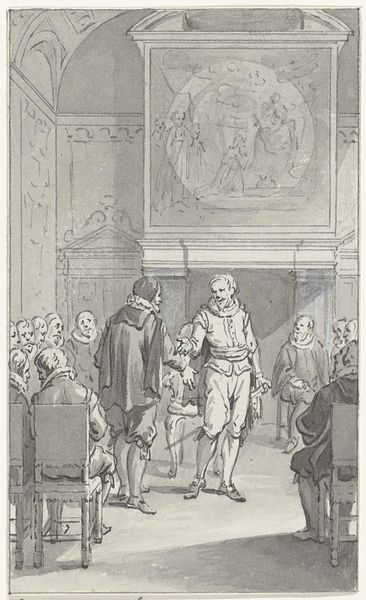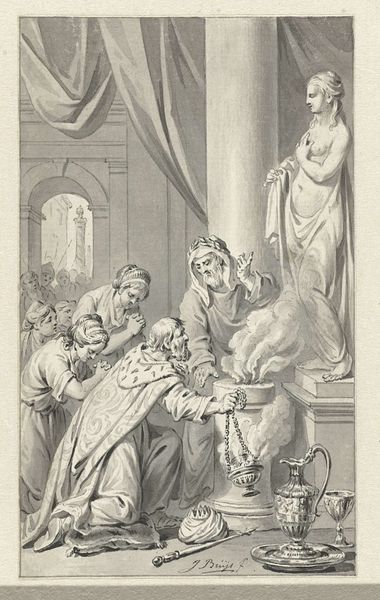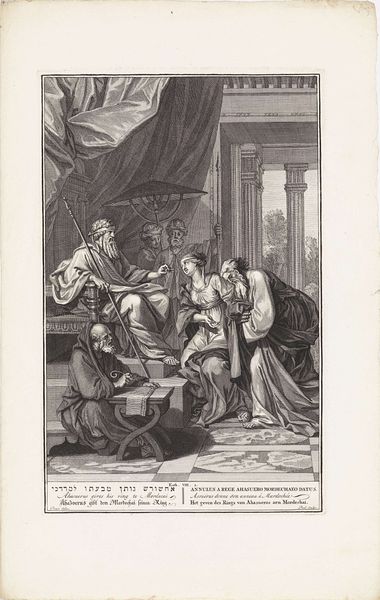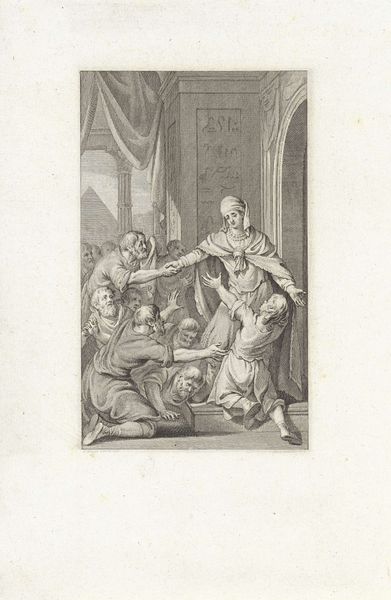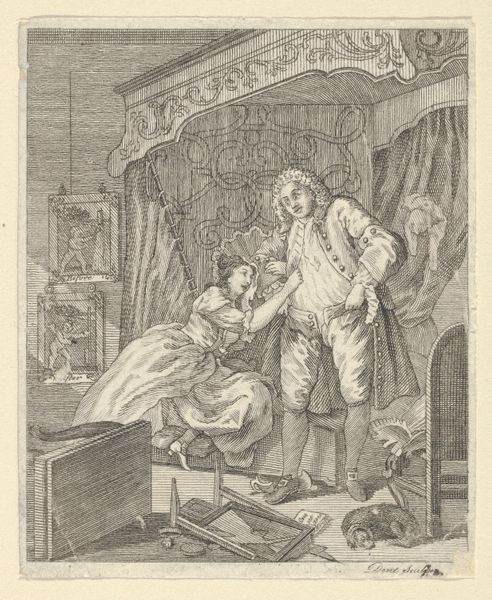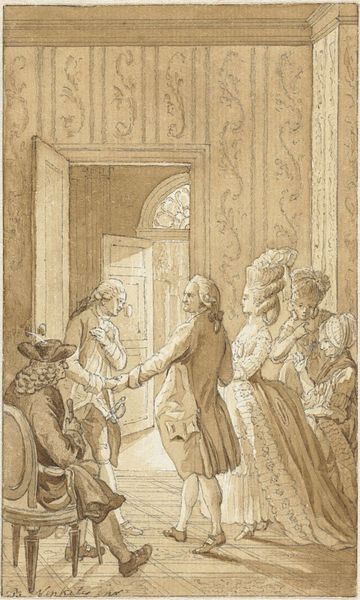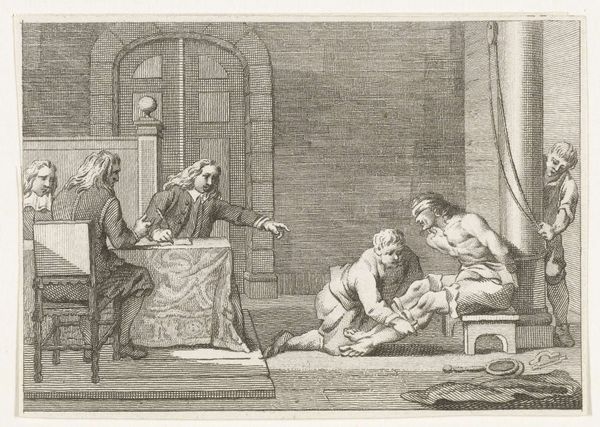
Dimensions: height 149 mm, width 89 mm
Copyright: Rijks Museum: Open Domain
Editor: This drawing, "Twee vrouwen en een kind, geknield smekend voor een heer," made between 1734 and 1801 by Jacobus Buys, depicts a very stark scene. You have a nobleman standing, pointing almost judgmentally at two women and a child kneeling before him. It's very heavy with the power dynamics that it portrays. What do you see in this work? Curator: I see a potent visualization of unequal power structures embedded in 18th-century Dutch society. It's vital to unpack the socio-political implications represented here. This image, rendered in pencil and ink, freezes a moment steeped in performative humility. The kneeling women and child aren't just subjects; they embody a systemic disempowerment prevalent at the time. Editor: Right, you have a very clear class dynamic that presents itself almost immediately. The noble has the stance, and clothing of authority while the rest appear meager. Curator: Precisely. The composition invites critical questions about gender, class, and justice. Note how Buys positions the nobleman elevated, literally looking down. This reinforces the societal norms that justified such disparities. What philosophical underpinnings were used to defend this visible imbalance? Think about the pervasive ideologies around masculinity, female subservience, and the divine right of nobility. Editor: So, beyond just depicting a scene, it's kind of unintentionally holding a mirror to those power imbalances? Curator: It's more than a mirror; it is a lens. Through our contemporary understanding, we see how such imagery, intended perhaps as genre scenes, unveils the deep-seated biases that underpinned social order. Editor: That's given me a lot to think about. I saw the image simply as a historical record, now I understand how we can interrogate it for social commentary. Curator: Exactly. Examining these historical narratives critically is fundamental.
Comments
No comments
Be the first to comment and join the conversation on the ultimate creative platform.
